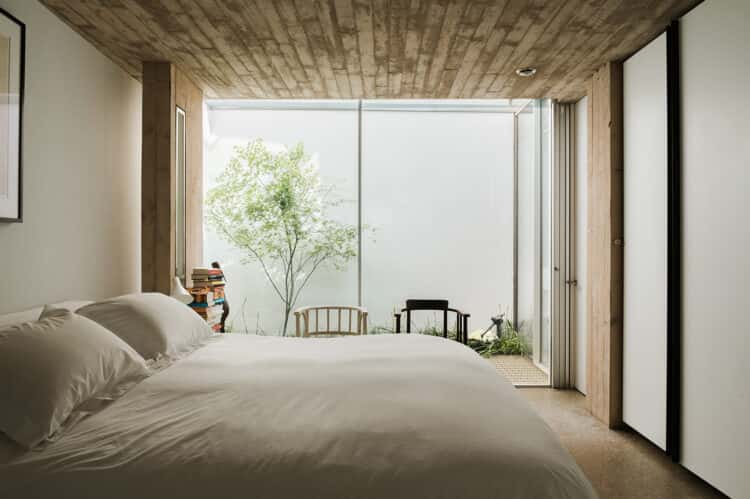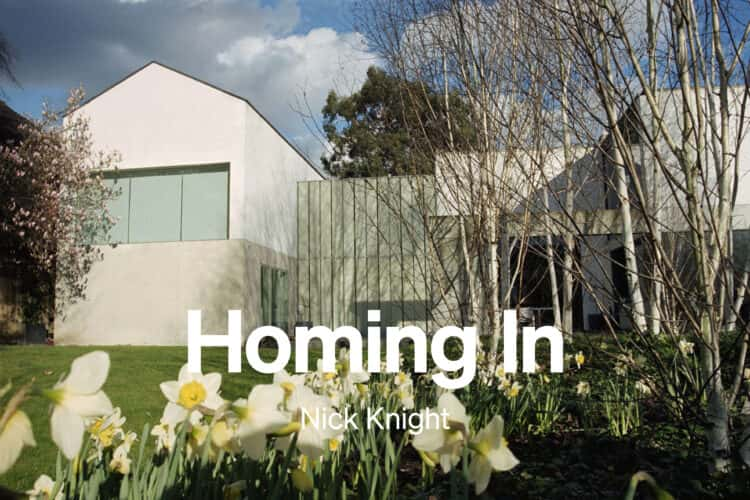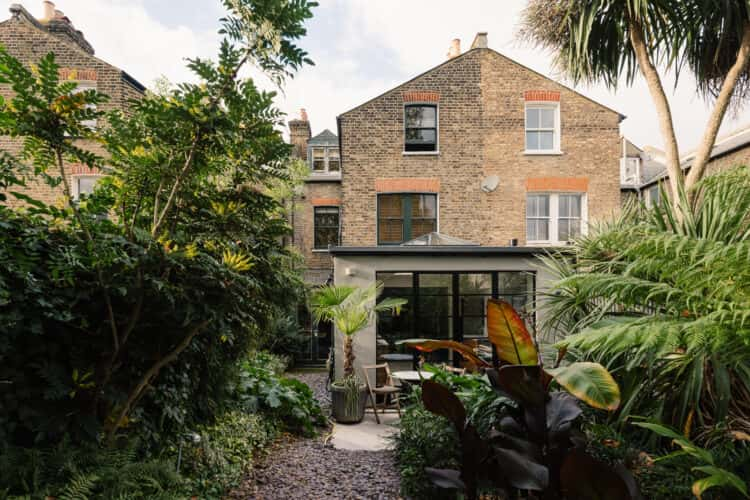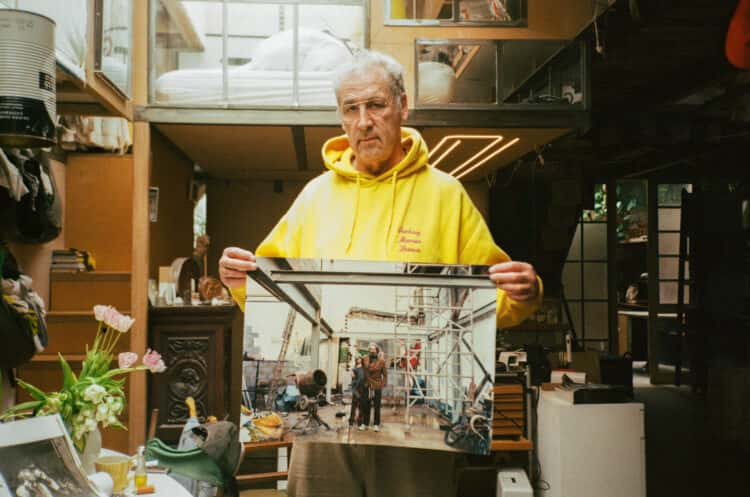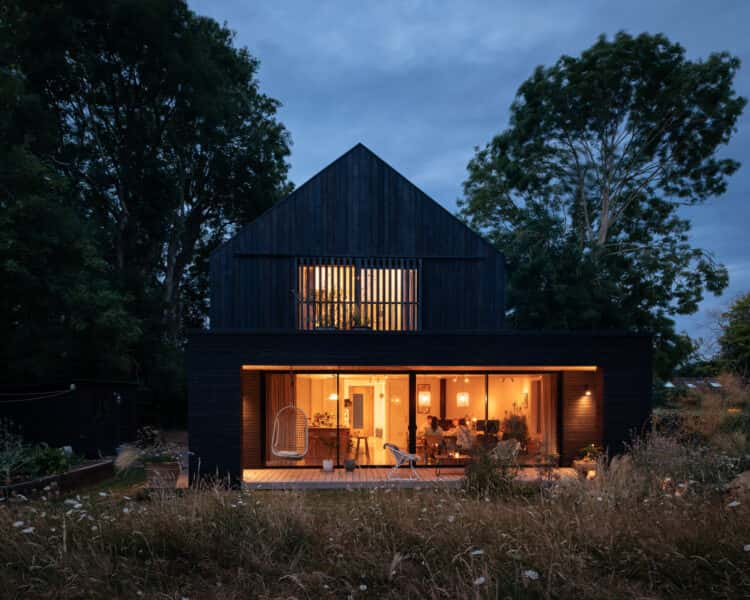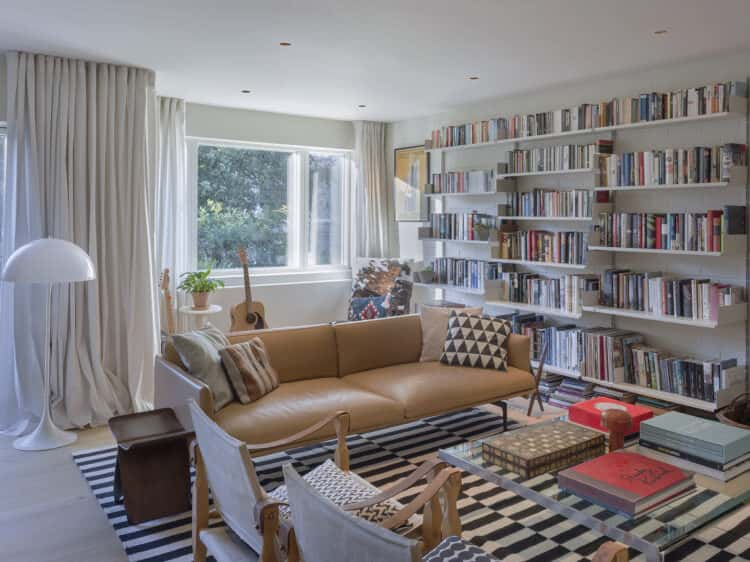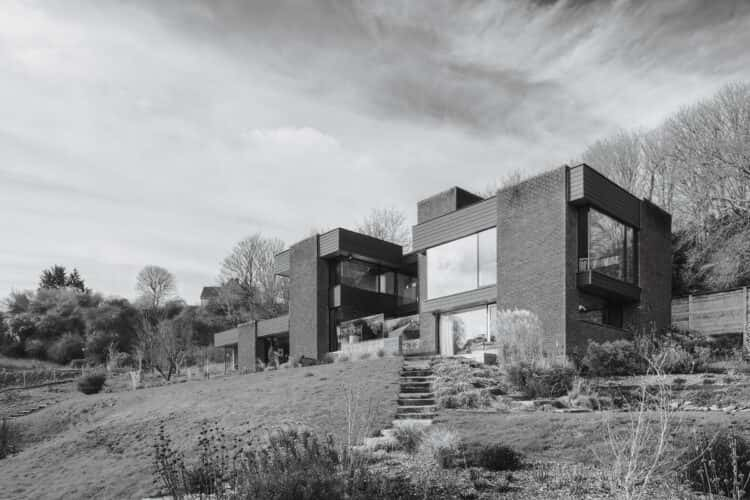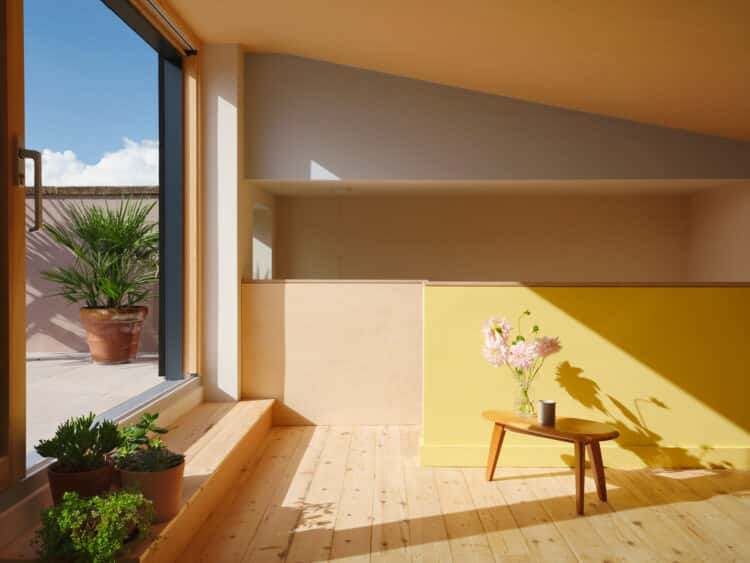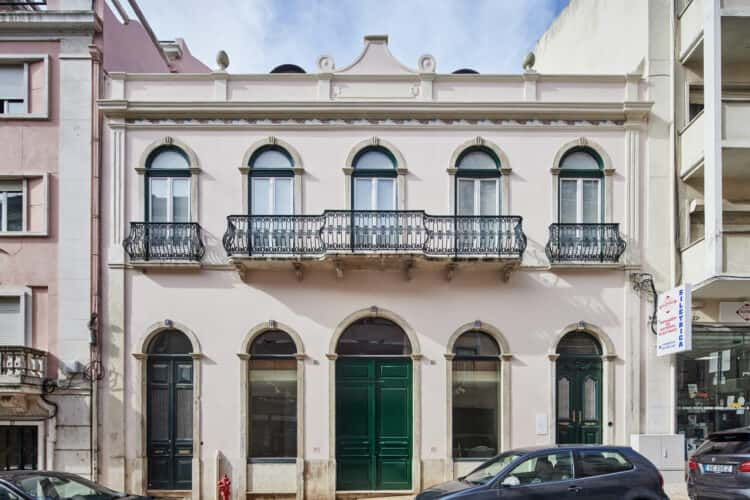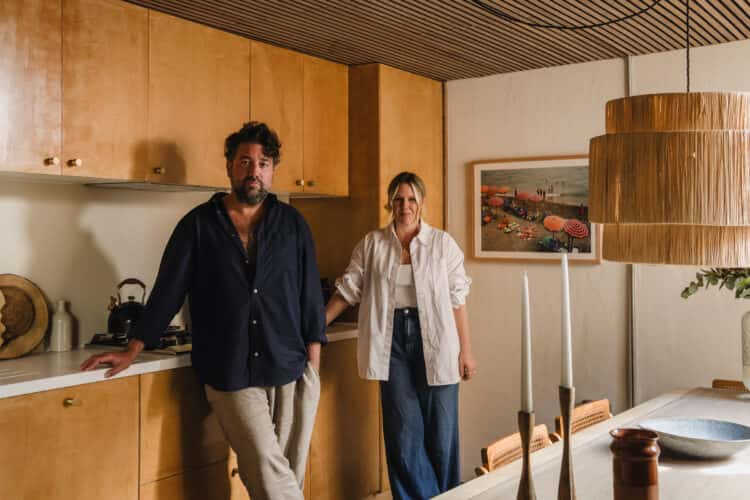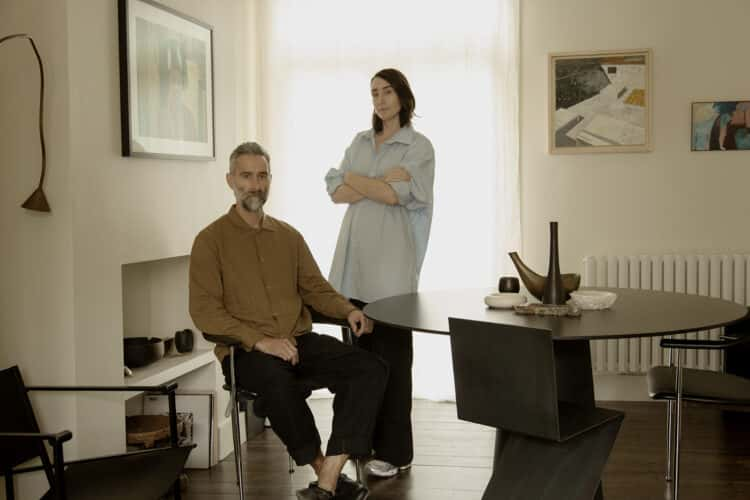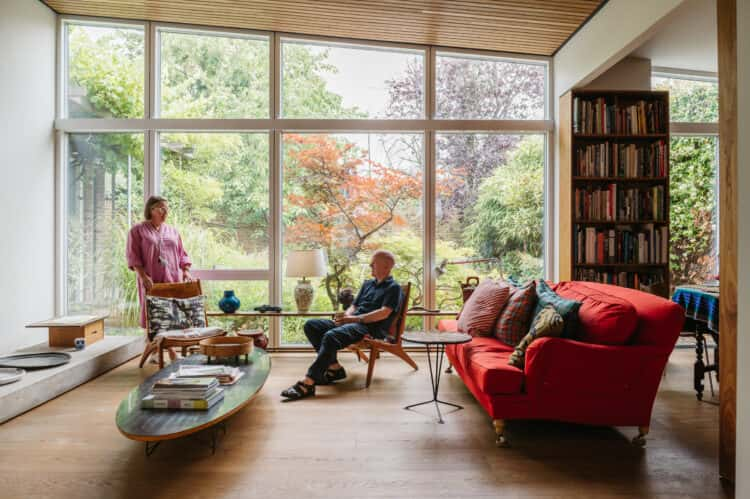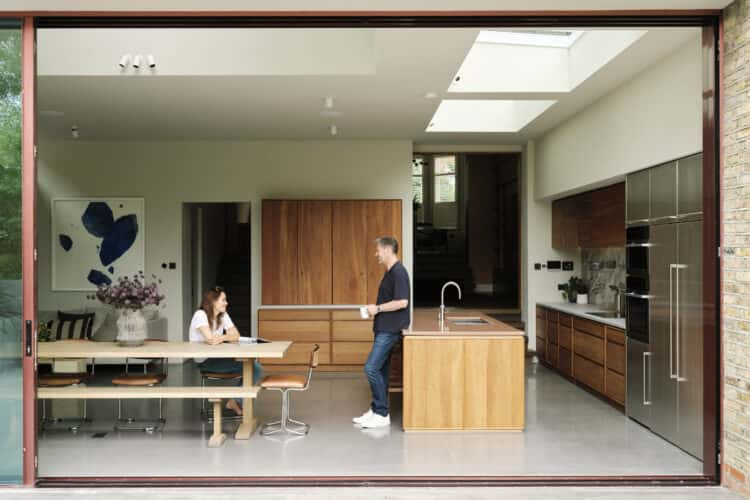Architect Sophie Hicks on life in her hidden concrete haven in Kensington
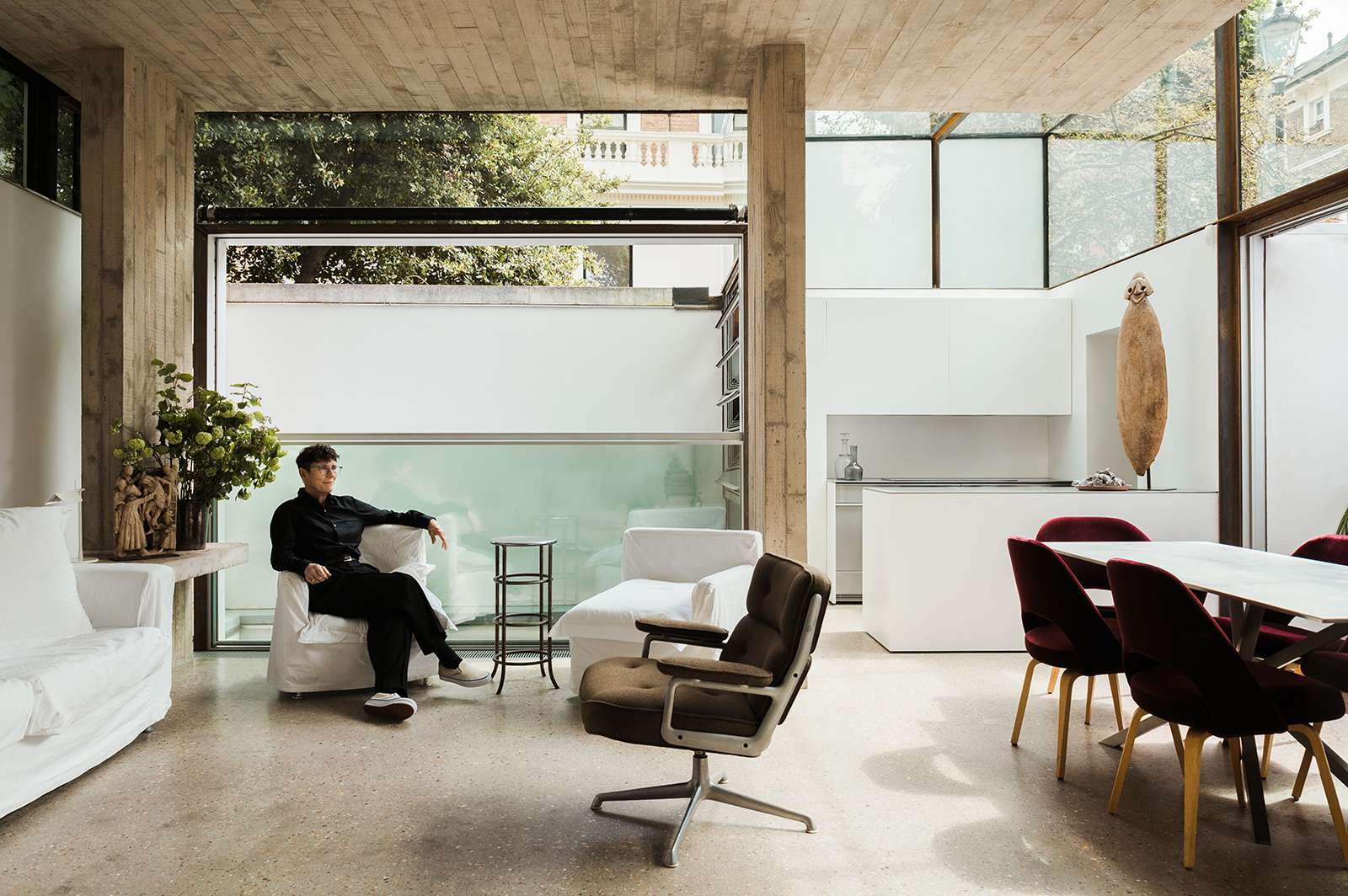
Words Billie Brand
Photography Ellen Christina Hancock
“Come on in,” says Sophie Hicks, waving us into her home in south-west London. “No need to take your shoes off.” The no-nonsense, no-frills architect is known for designing buildings that are raw, restrained and come alive with light – and perhaps nowhere is this more palpable than right here. On the bright, blue-skied morning of our visit, the sun is shining through the glass walls and ceiling, while the leafy trees that tower overhead are reflected in their panes. “It’s very good at this time of year,” Sophie muses, now standing in her minimal kitchen having breakfast – strawberries and orange juice – before swiftly moving on to black coffee.
Sophie is a former stylist (she was fashion editor at Vogue in the 1980s and worked with the late designer Azzedine Alaïa), whose stint in fashion proved worthwhile when, in her late twenties, she trained in architecture. Her industry know-how and book of contacts meant she became the top choice to conceive some of the best stores on the planet: from Acne Studios’ monolithic marvel in Seoul to Alaïa’s gallery-like shop in New York – and then some. Right now, she’s in the midst of designing a new shop for Mugler in Shanghai. “I like being an architect and dipping my toe in fashion,” says Sophie, who is known for her own sartorial style. Today, for instance, she’s wearing a button-up shirt tucked into belted tailored trousers with her signature dark-framed specs.
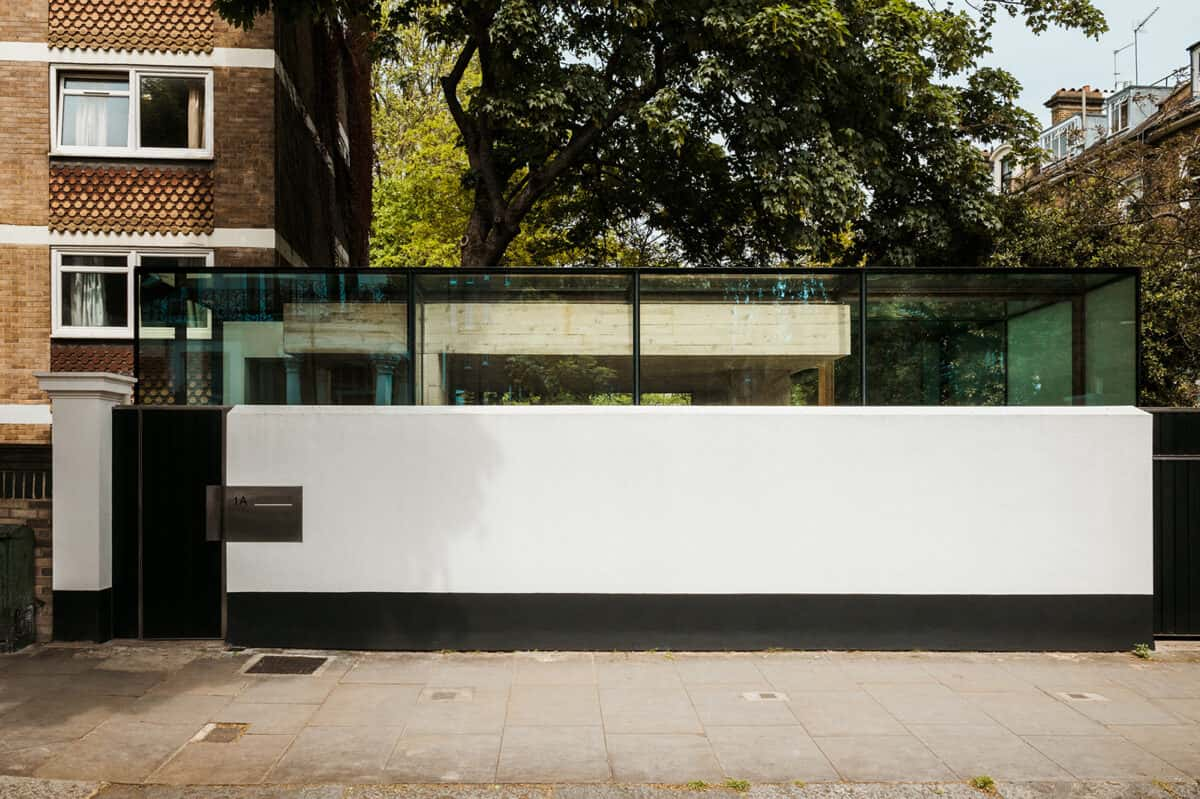
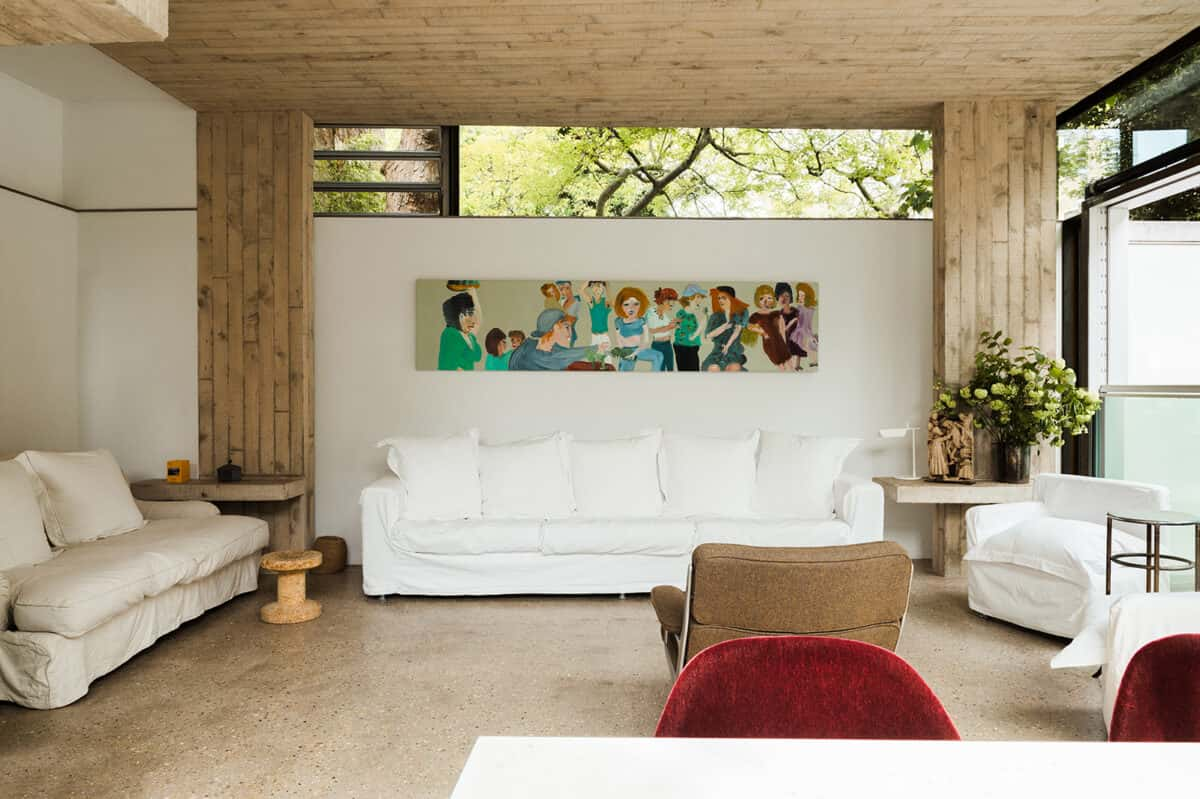
She might be renowned for elevating retail experiences around the world, but one of Sophie’s most important buildings is her home. When she designed it in 2017, the boxy cutting-edge concept (which includes motorised windows – some retract to reveal a stunning connection with the sky – and mechanical ventilation) raised the eyebrows of her neighbours. (Her street is lined with more conventional period homes.) As a result, Sophie concealed its stirring design – which includes an underground level – behind a thick white-painted wall, so that only the near-invisible glass top would peer above it. Once the project was complete in 2019, however, opinions shifted: not only have those living nearby changed their minds, it also won over the world of design – and a 2019 RIBA award. Having lived here for five years, has Sophie’s own opinion of the space changed? “No,” she declares. “It was – and still is – perfect for me.”
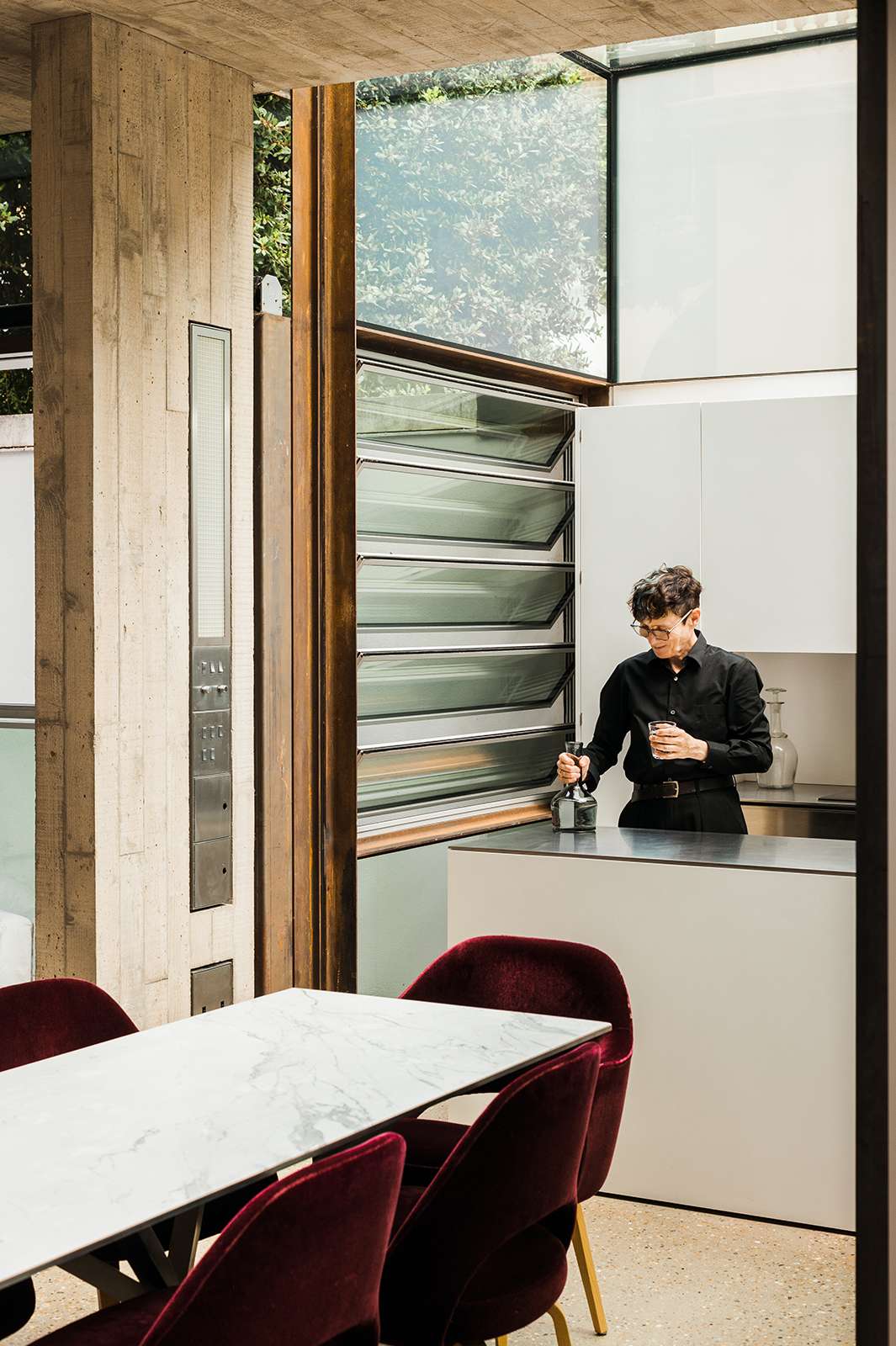
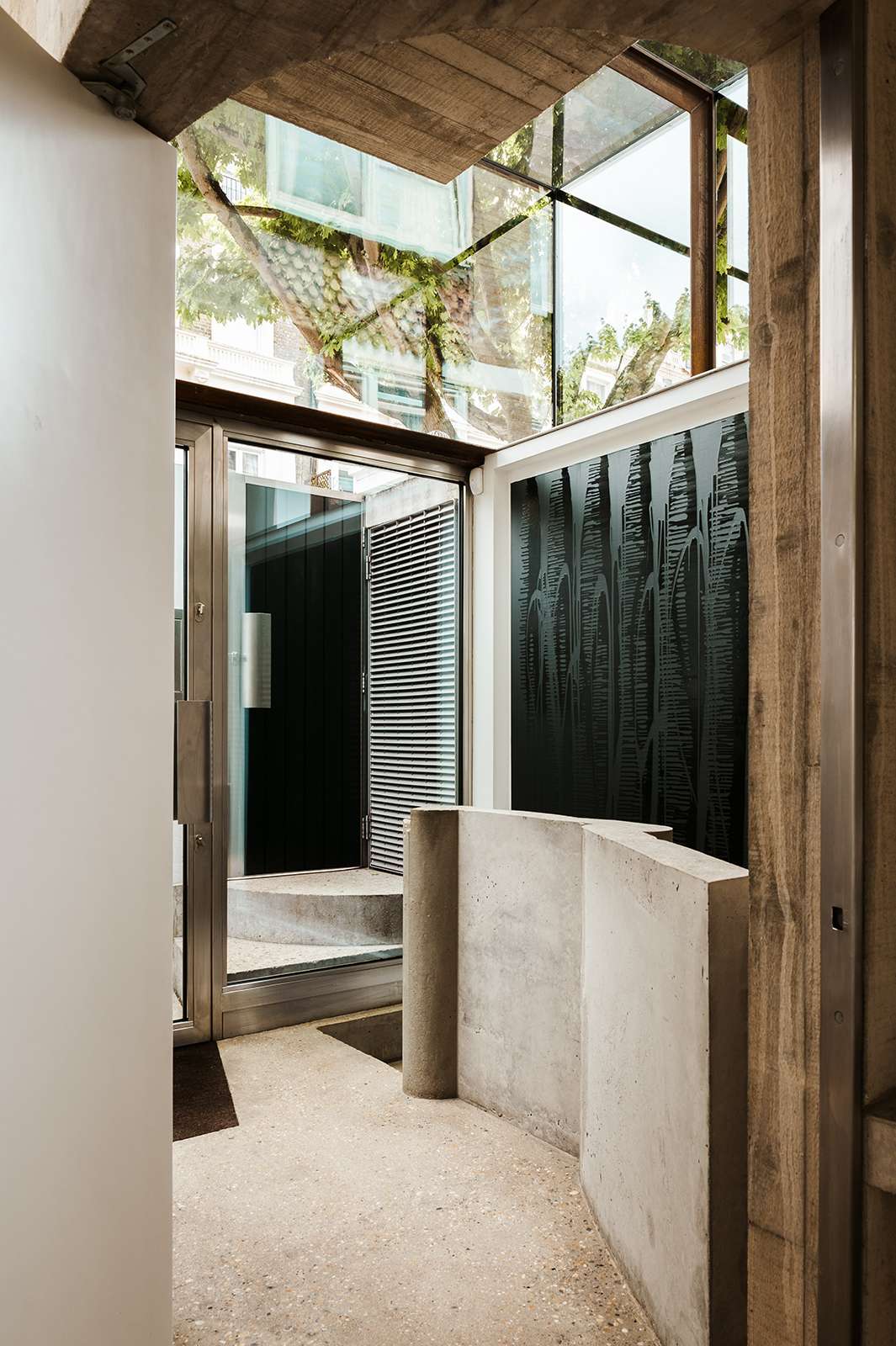
“Even though I started my career as a fashion stylist, I thought about being an architect when I was at school. Growing up, my parents’ home in Kensington was very 1950s. It was polite, nice, boring. I didn’t particularly like it. The politeness of it wasn’t interesting to me. Then suddenly, in 1964, Terrance Conran came to London and opened Habitat. He was inspired by modern and Continental living. I remember going to the store with my mother and thinking: ‘People don’t have to live like we do at home. You can live with amazing colour, pattern and design.’
“As a young teenager, that experience got me thinking about the possibilities out there; how the constructed environment can be all kinds of things. But I didn’t want to go to university and train. I was dying to escape classrooms; I couldn’t stand them. So, I fell into the wild and fascinating world of fashion and began working. That was in the 1970s, which was a very interesting moment for the industry. My first job in magazines was for Willie Landel’s Harpers & Queen. Willie had the courage to give me four pages to edit each month at the age of 18. After that, I went to Vogue, working as fashion editor Grace Coddington’s assistant. I learned a lot. She taught me not to get bogged down with decisions, but to see what catches your eye and go for it. That’s been very useful advice throughout my life.
“After a decade of styling, I decided to create something myself. I was working for Azzedine Alaïa at the time, who was so brilliant and skilled, which made me think I couldn’t possibly become a fashion designer. And so, in 1987, I went to train at the Architectural Association. I cut my teeth doing house refurbs for my friends, getting planning permission and knocking Victorian houses apart to make them more exciting. In 1994, after becoming a chartered architect, I began designing stores for Paul Smith – he knew me from my time at Vogue – and it went from there. Today, I’m lucky enough to work with creative directors at the top of their game, from Pieter Mulier, who is now at Alaïa, to Casey Cadwallader at Mugler.
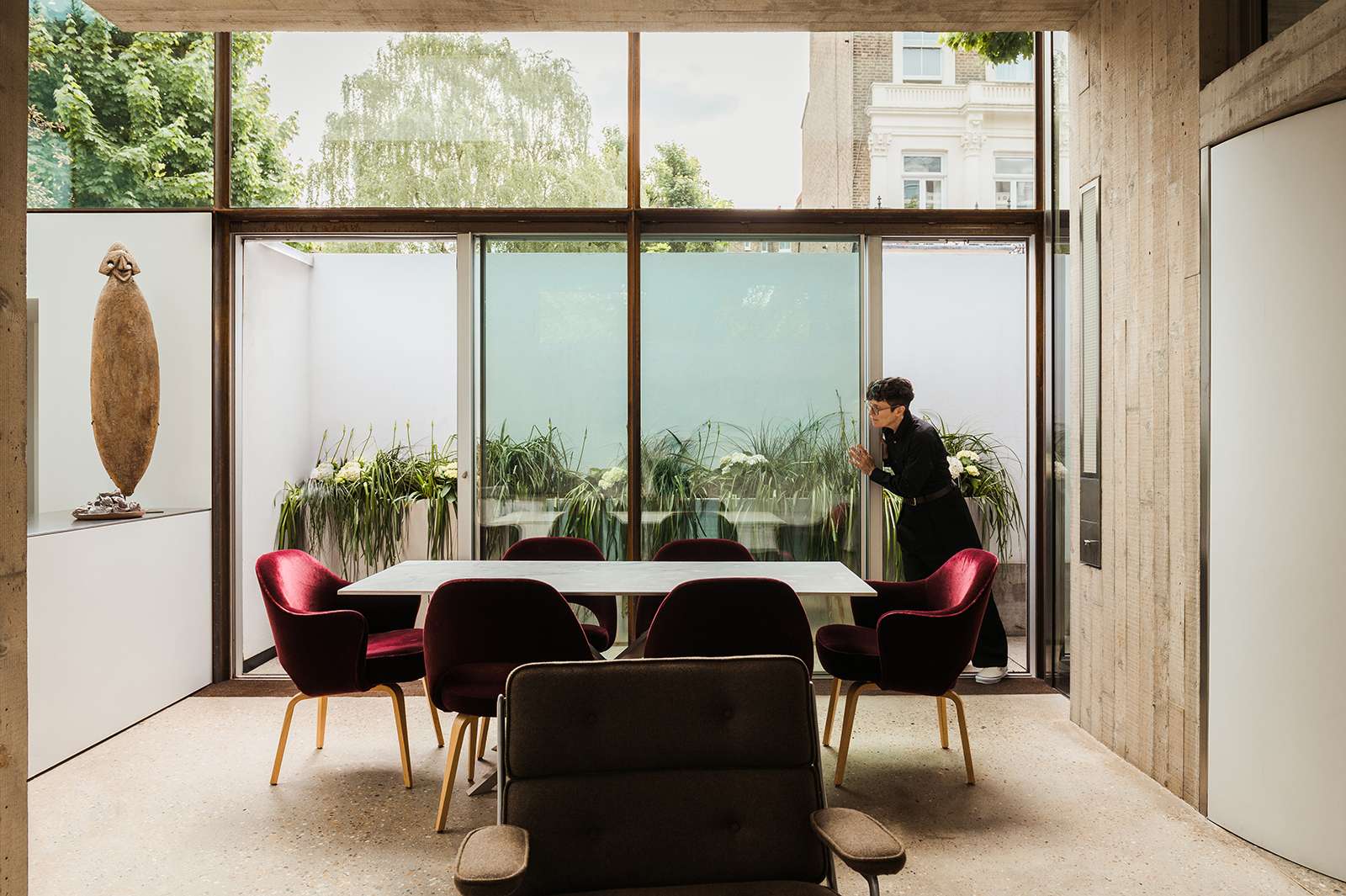
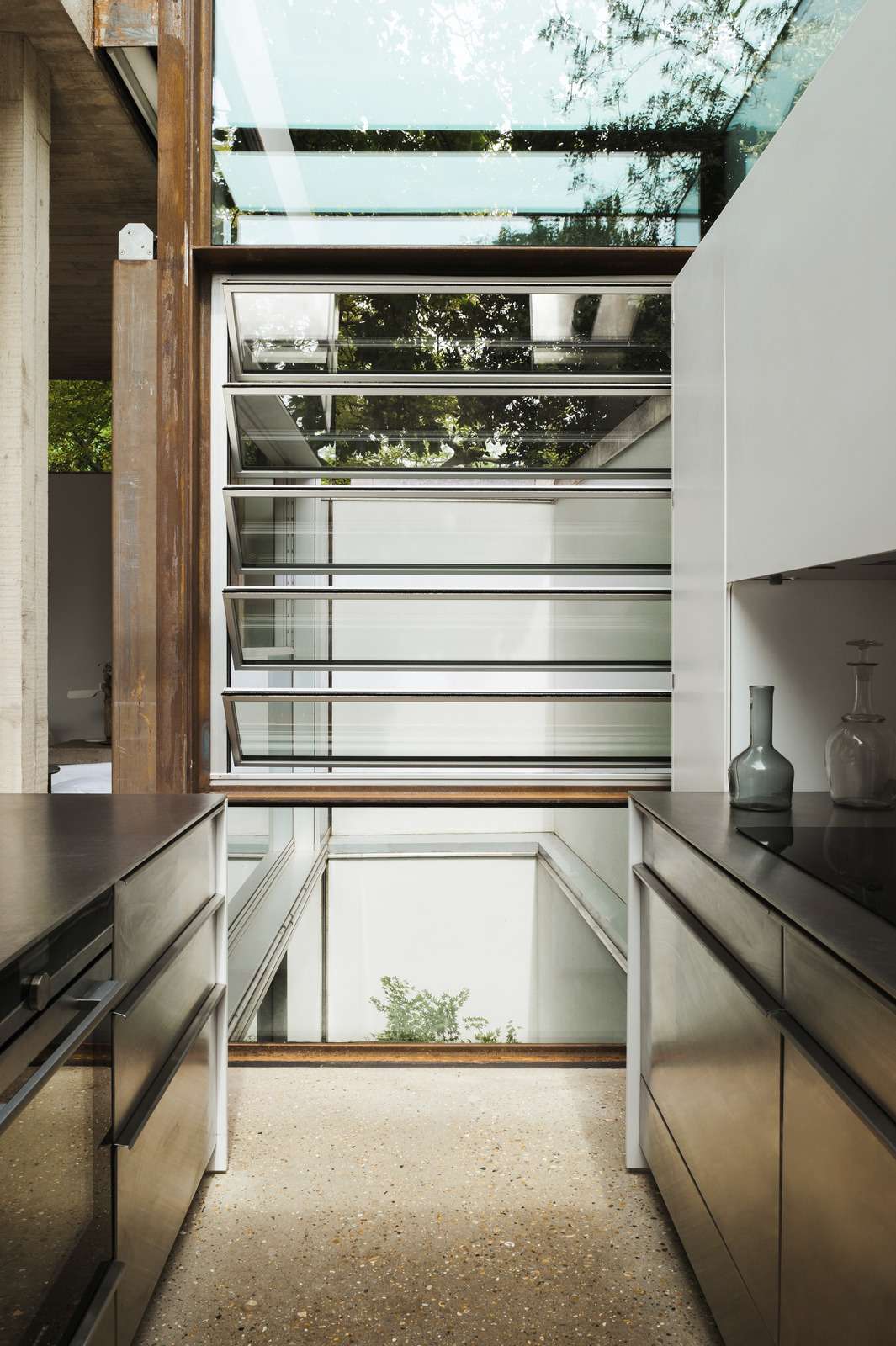
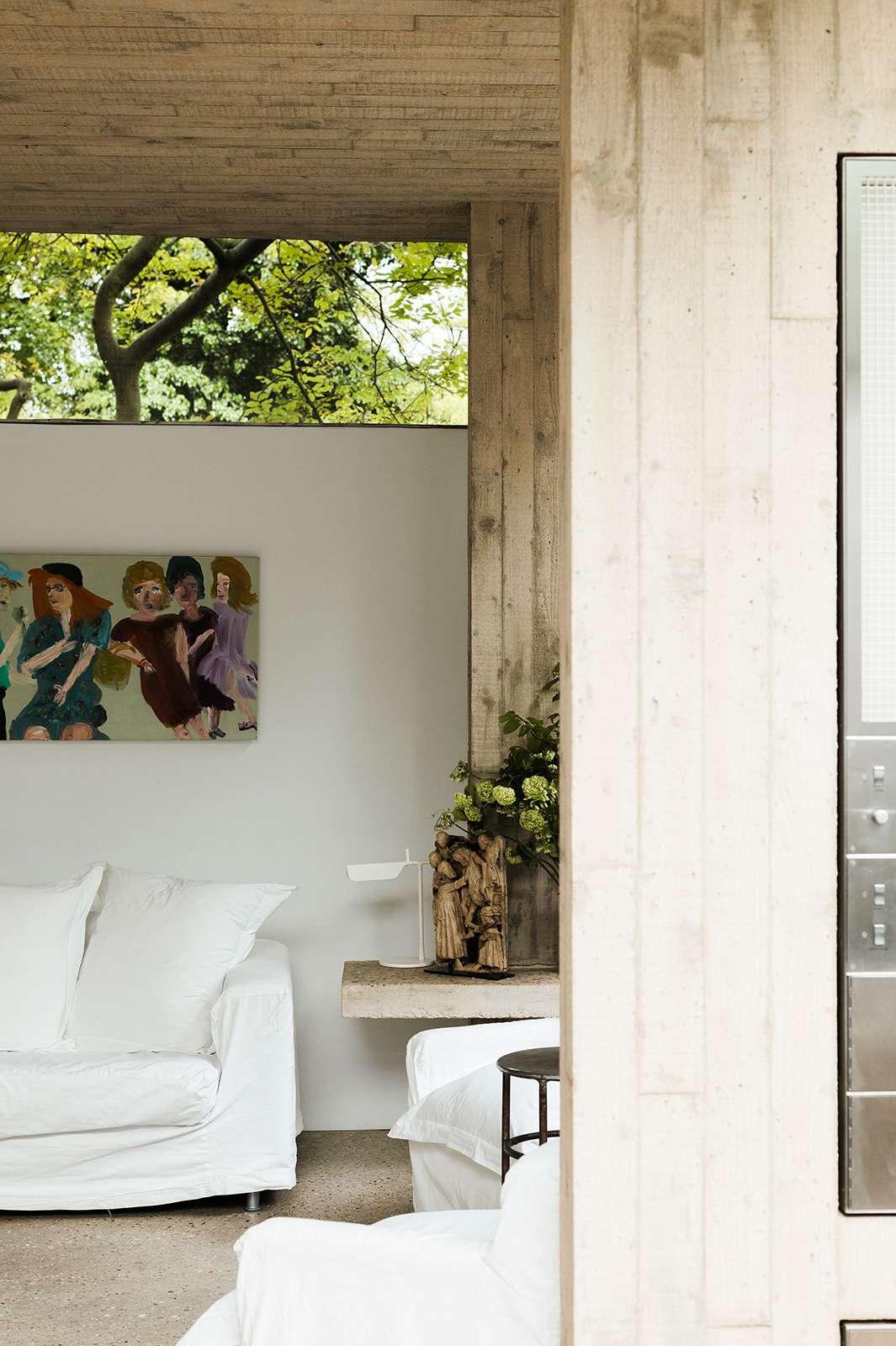
“When I design for a client or a brand, I try to find out what they’re all about: who are they, what are their values and what are they trying to communicate? I like working like that – I become immersed in someone else’s world. For that reason, I must not have a style. I must be a chameleon. But there are also some constants in my work, such as layering. I like to create visual steps. I play games with discovery and visibility. And I like heaviness – something within a building needs to be weighty, so that the space feels grounded.
“When I first saw this site in an auction catalogue, I thought: ‘Well that looks quite good. If I can get it, great.’ And I did. By this point, I had quite a lot of experience getting planning permission in London. It’s always a long haul, but you get there in the end – even in Kensington. The design of this house then went through lots of iterations. At one point, it was going to have three storeys, but I couldn’t get permission for that. During the planning phase, there was a lot of opposition from my neighbours. People don’t like change – and this is different from the other homes here. But since the house has been built, people stop me in the street and tell me they love it. ‘We look at it every time we go by,’ they say.
“I don’t get on with things that are too refined or prissy. What I love are elements that are quite basic. This rough floor here, for instance, is structural concrete that’s been ground and polished. That’s it. It’s ordinary concrete from the cement mixer. But I like it. I don’t decorate, either. There is never any reason for it. As you can see, there isn’t much decoration here. I have some nice paintings and objects, as well as a few fairly neutral bits of furniture. That’s it, really.
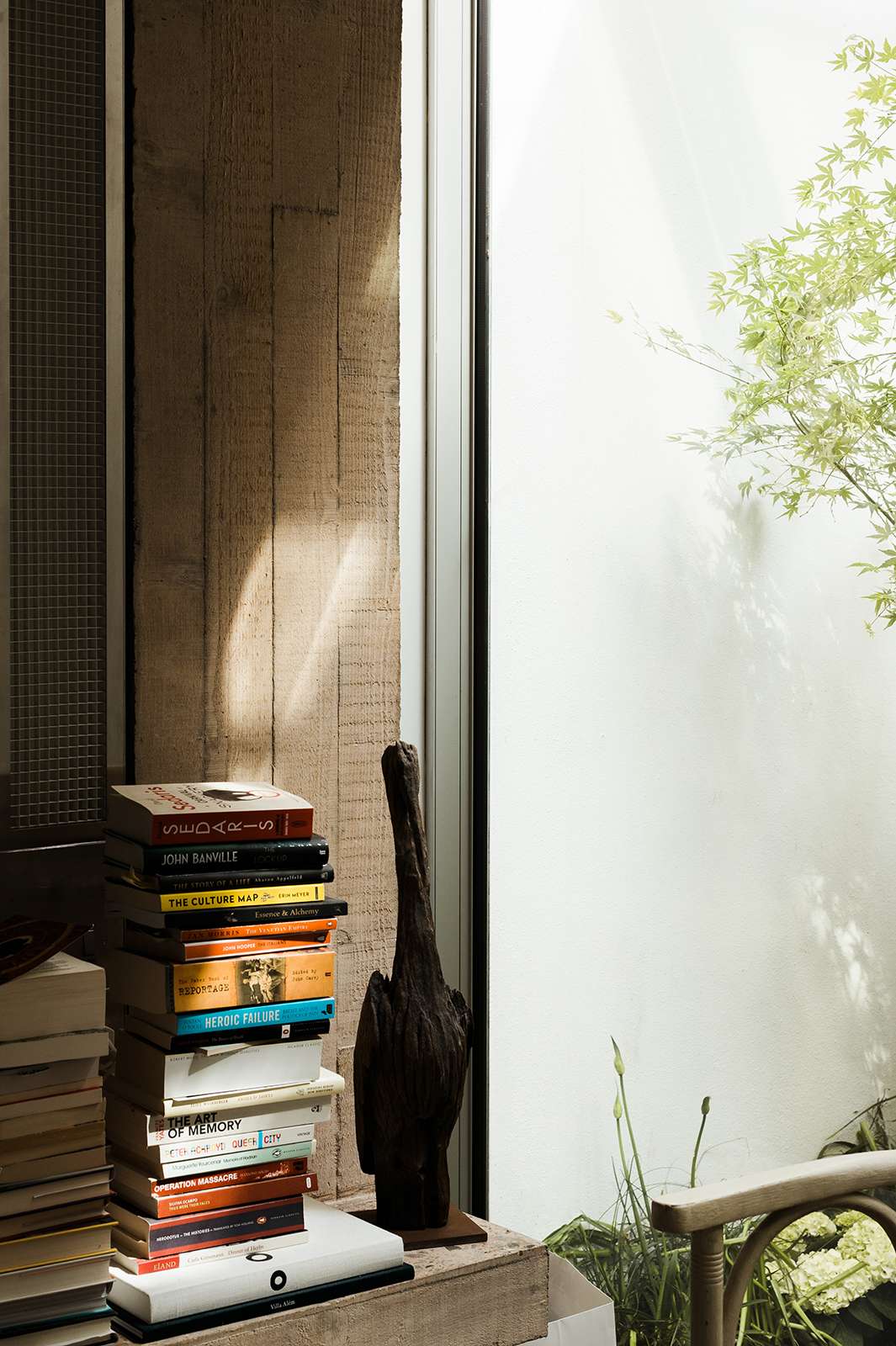
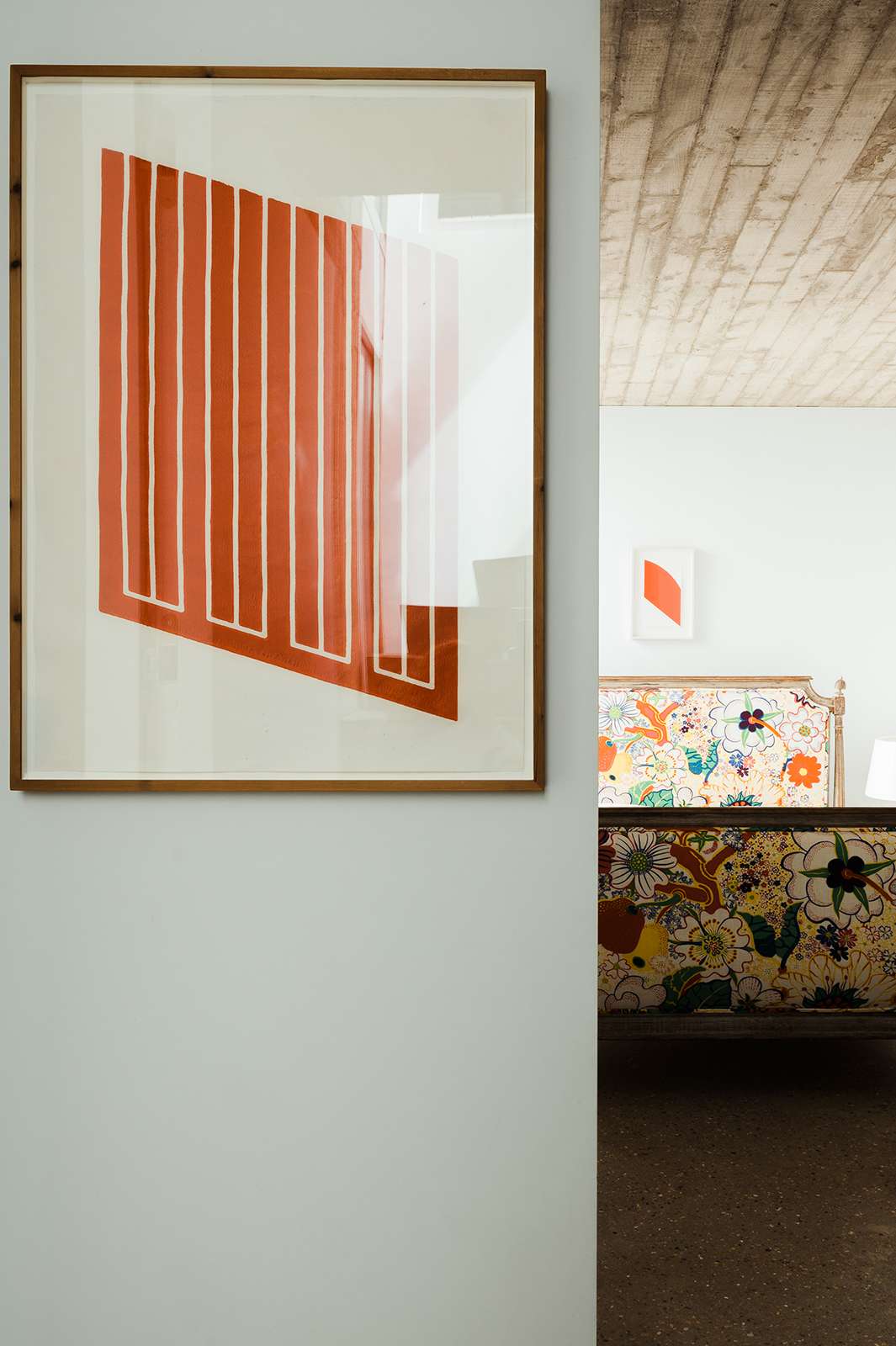
“Light is always a big part of my work. It’s particularly nice here late at night when the streetlights are on and they create all these incredible shadows on the wall in the kitchen. I also like it in the morning when the sunlight comes in. You really feel all the elements and seasons in here – especially when the trees come into leaf and you can see green through the back window in the living space. In fact, when you open all the windows, it can feel like you’re outside. This house might not have a garden, but with all the greenery, you still have a strong feeling of being outdoors.
“For me, an ideal day at home is slow and lazy. I like to just drift around the space. But I also like hosting here too. I have thrown lots of parties. You can easily fit 30 people on the first floor. The smokers will stand by the windows and people will dance in the living space. It’s a lot of fun. I think a house gains character through people being there and having a good time.
“When I was designing the house, I thought a lot about maximising space as the footprint is small. Now, I love its size. It’s got just enough room for me. Before I moved in, I was living in a five-bedroom house, but most of my children grew up and moved out, so I didn’t need a big house anymore. I love living in a little place that’s beautiful and I feel comfortable in. Everything is where it should be. The only thing it doesn’t have, which I would like, is a swimming pool. I had one in my old house and I would often do lengths, which I miss – and I simply can’t find the time or the energy to go to the public pool. But hey, that’s the only thing. Otherwise, it’s perfect for me. No, I wouldn’t change a thing.”
